Does Cadbury chocolate taste different in different countries?
- Published
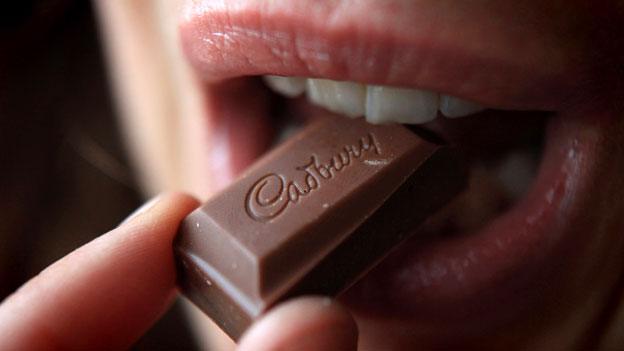
Moves to prevent retailers importing British-made Cadbury chocolate into the US have scandalised some expats, who say US-made Cadbury chocolate is inferior - and who often view Hershey's, the most popular US chocolate, as beneath contempt. But how big is the difference?
"American chocolate is rubbish," says John Hanson the owner of The British Shoppe, a UK food store based in Orlando, Florida.
"Cadbury's chocolate tastes like chocolate," he says, "whereas Hershey's chocolate tastes like wax."
He's not the only one who thinks so. More than 37,000 people have signed a petition, external to boycott Hershey's, which has the licence to produce Cadbury chocolate in the US, and regards imported British-made Cadbury chocolate as a trademark infringement.
Some have added comments along with their signatures, like Dayne Thomas from Richfield, Minnesota who writes: "Maybe the reason people prefer British chocolate is that it's not the over-sugared minimal cocoa butter garbage that Hershey's makes. If they want to sell more product, how about they make a better product??"
It's clear there are lots of people out there who love Hershey's chocolate - global net sales amounted to $7.4bn in 2014.
Of six people the BBC asked to compare Cadbury and Hershey's chocolate, two (both Americans) gave Hershey's a high score - four out of five.
It's also clear that neither Cadbury nor Hershey's are gourmet brands. They produce everyday chocolate - "candy", as they say in the US.
So what is it that differentiates these chocolates? We carried out a taste test with British and American tasters, spoke to experts, and tried to get some answers out of the companies.

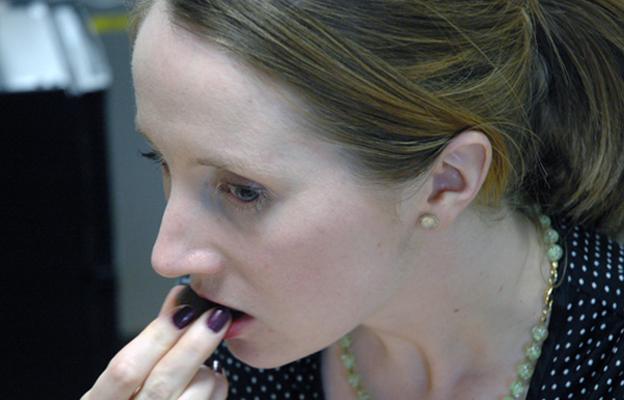
Everyone in our taste test could tell the difference between the Cadbury Dairy Milk and Hershey's milk chocolate. They used terms like "harder", "more bitter", and "not as rich" to describe Hershey's, even when they liked it. None of the tasters selected it as their favourite of the three samples and two said they would not choose to eat it at all.
When it came to distinguishing between the US-made and UK-made Cadbury chocolate one taster noted that they were "quite similar", another thought that they tasted exactly the same. Those who detected a difference didn't always agree on much beyond that. One thought the US sample was creamier and more gooey, another felt the opposite, saying that the UK sample was "more melty". One said the US sample was sweeter, another disagreed. And the tasters were divided on which of the two was better.
Interestingly, it was a British expat in the US, Alexandra Dimsdale, who immediately recognised the taste of "normal" British-made Cadbury chocolate, and identified a "weird aftertaste" in the US-made version - and in Hershey's too.
In a test conducted by BBC Newsround, British and American children tasted the two types of Cadbury chocolate. Surprisingly, most of the American children preferred the British-made Cadbury chocolate, while most of the British children liked the US-made version better.
Children in the UK and US take the chocolate challenge for BBC Newsround
The main ingredients of any milk chocolate are cocoa, milk and sugar. That much they all have in common. What may differ are the proportions, the taste of the raw ingredients, the way they are mixed together, and any extra ingredients.
According to Lawrence Allen, a former executive at Hershey's and Nestle and author of Chocolate Fortunes: The Battle for the Hearts, Minds and Wallets of China's Consumers, three main factors determine the taste of the finished product:
the amount of cocoa
how long it is mixed
the flavour of the milk
Cocoa
The ground-up cacao bean is made of cocoa butter, and non-fat cocoa powder (or "cocoa mass," as it appears in the list of ingredients of a British-made Dairy Milk bar). Taken together these may be referred to as dry cocoa solids, or chocolate liquor. Generally a more expensive and higher quality chocolate has a higher proportion of cocoa, which may explain why people who don't like Hershey's sometimes state that it contains less cocoa than Cadbury chocolate.
A look at the different minimum standards for chocolate imposed in the US and the European Union might also lead someone to this conclusion. Milk chocolate in the EU must contain 30% cocoa, whereas in the US it need only contain 10%.
But these figures are very deceptive. The US requirement for 10% cocoa refers only to non-fat cocoa powder. The overall amount of cocoa, including cocoa butter, will be higher. In the EU, meanwhile, the requirement for chocolate to contain 30% cocoa refers to both cocoa powder and cocoa butter, so the percentage of cocoa powder alone will be lower.
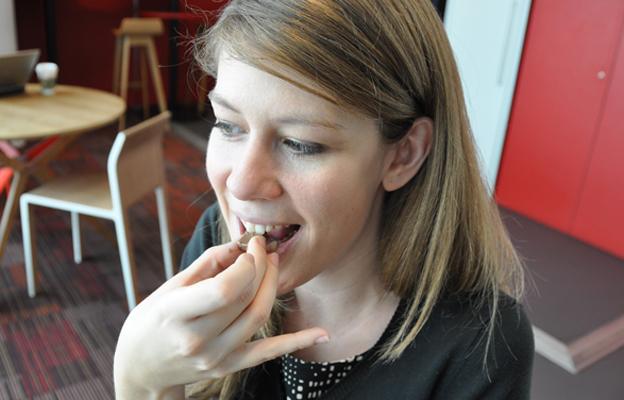
It "tastes like home" - the verdict of a US expat in London, Sarah Geisman, on Hershey's
In addition, the EU allows a different kind of "milk chocolate" to be sold in the UK and Ireland (it must be labelled "family milk chocolate" anywhere else in the EU). This contains at least 20% cocoa (powder and butter combined) and 20% milk solids - and Cadbury Dairy Milk falls into this category. The list of ingredients on the back of a British-made Cadbury Dairy Milk bar says it contains a minimum of 20% cocoa solids. When it comes to "milk solids" the label says: "20% minimum, actual 23%".
So, how much cocoa does a Hershey's bar contain? According to Jeff Beckman, the company's director of corporate communications, it contains about 30% dry cocoa solids - cocoa powder and cocoa butter combined. About 1.5 times as much as a bar of Cadbury's Dairy Milk.
It's also notable that Cadbury sources all its cocoa from West Africa, while this is only one of the places Hershey's buys it. There could be a slight difference in taste.
Mixing
The more time spent combining the ingredients, the smoother the resulting chocolate will be, says Lawrence Allen. A luxurious chocolate, like Lindt, may be mixed for 12 hours or more, he says, while a mass-market bar, like Hershey's or Cadbury's, may be mixed for only two or three.
Our tasters identified Cadbury's as creamier than Hershey's. One described Hershey's as "chalky", two described it as "grainy". Does this suggest it is mixed less than Cadbury's?
We may never know, as both companies declined to say how long they mixed their chocolate.
Milk
Milk tastes different in different countries. It may even taste different in different parts of one country, depending on the breed of cow, and what the cow is fed on.
"I know people in Australia who are die-hard Cadbury advocates," says Lawrence Allen. "But they go on business trips to the UK, and they bring their own chocolate."
This, he thinks, may be because Australian milk gives the chocolate a distinctive flavour.
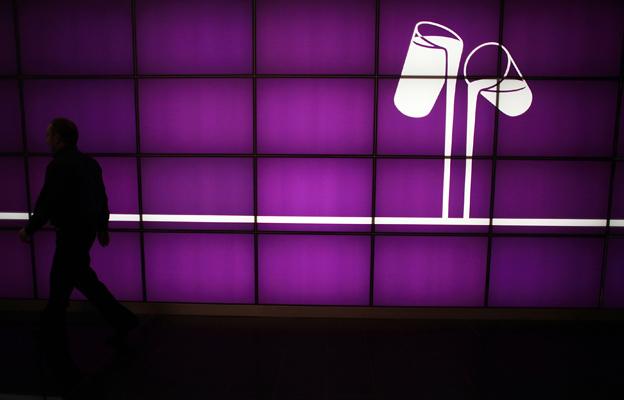
The old Dairy Milk slogan "A glass and a half of milk in every half-pound bar of chocolate" has now become: "The equivalent of 426ml of fresh liquid milk in every 227g of milk chocolate"
So maybe a difference in the milk would account for a difference in the taste, if there is one, between British-made and US-made Cadbury chocolate?
Actually, that seems unlikely. Hershey's makes Cadbury chocolate using Cadbury "crumb" - a sandy-textured paste of powdered cocoa, milk and sugar - shipped from the other side of the Atlantic. It's hard to imagine there is much difference between the crumb that ends up in US-made Cadbury chocolate, which is produced in Ireland, from the crumb produced in Herefordshire for British-made Cadbury chocolate.
Different milk, however, could help explain the difference between Hershey's chocolate and Cadbury's - and so could what happens to the milk in the production process.
According to Jennifer Earle, a UK-based chocolate consultant, Cadbury first combines the milk with sugar and then dehydrates it. This caramelised milk is then mixed with cocoa. Meanwhile, Hershey's mixes the cocoa with sugar and then adds dehydrated milk. The resulting taste is "very different", Earle says.
But there's more. Hershey's puts milk through a process called lipolysis, Earle says. This partially sours the milk, and creates butyric acid - a compound found in such diverse substances as parmesan cheese and baby spit-up. It gives the chocolate a "tangy taste" as Earle puts it. The chief advantage of this method is that chocolate can remain on shelves longer without the taste changing - but it's also a taste American consumers have become accustomed to and nowadays even expect.
Other ingredients
If you look on the back of a bar of Hershey's and a bar of British-made Cadbury Dairy Milk chocolate you'll notice a difference. Hershey's lists sugar as its first ingredient while Cadbury lists milk first. It's obligatory to list ingredients in descending order by weight, so perhaps this means the Hershey's bar contains more sugar than milk - and vice-versa in the case of the Cadbury bar?
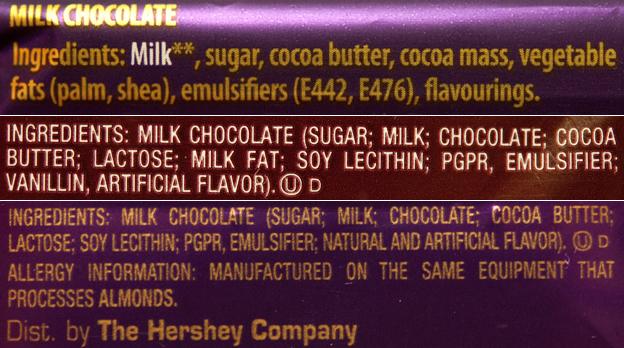
Lists of ingredients from British-made Dairy Milk (top), Hershey's, and US-made Dairy Milk
Actually, no. If you look at the back of a US-made Cadbury bar, you'll find it's the same as the Hershey's - sugar comes first.
The difference, Beckman explains, is that milk in chocolate in the US is measured in evaporated form, while milk in British chocolate is measured in its heavier liquid form. There is the same amount of milk in the US-made and British-made Cadbury bars.
The labels also show that the Hershey's and Cadbury chocolate bars contain an almost identical quantity of sugar - about 56g per 100g.
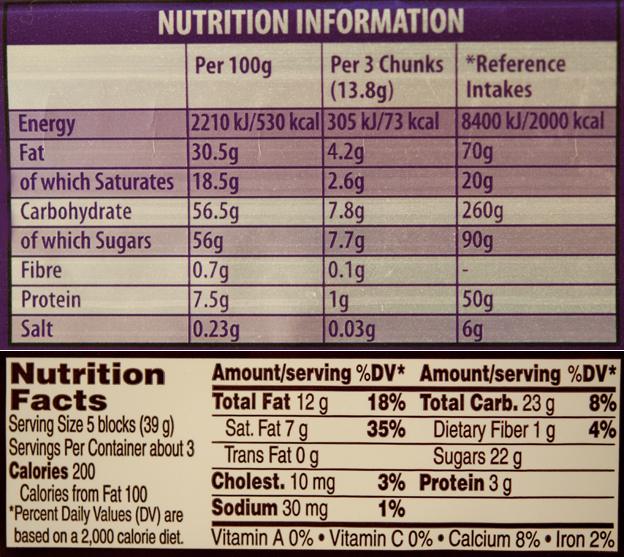
There is a slight difference regarding the emulsifiers. The US version lists soy lecithin and PGPR while the UK version lists E442 and E476. PGPR and E476, however, are the same thing. Soy lecithin and E442 are different but do the same job.
But there is one significant difference between British and US chocolate among these other ingredients. The UK, like the rest of the EU, allows up to 5% non-cocoa vegetable fats to be blended with the crumb, along with cocoa butter. The US does not.
According to Beckman, this is the main difference between US-made and British-made Cadbury chocolate.
Cadbury lists these non-cocoa vegetable fats on the Dairy Milk label as "palm, shea" - palm oil and shea butter - but the company declined to reveal the exact percentage.


Lawrence Allen says Europeans have a prejudice against American chocolate."The chocolate tradition in America evolved differently than it did in Europe," he says. While chocolate is a delicacy or at the very least a treat in Europe, it is a mass-market product of the everyman in the US, he says.
However, this applies more to continental Europe than to the UK, where Dairy Milk and its competitors such as Galaxy account for a large percentage of chocolate sales.
Jennifer Earle believes people care about tiny differences between one product and another because chocolate is deeply personal.
"Childhood memories, isn't it?" she says. "Chocolate is one of the most unique flavours."
People become accustomed to a certain taste and the comfort associated with it and they can tell immediately if something isn't quite right.
And if Earle were living in the US and suddenly cut off from British-made Cadbury's chocolate?
"I'd be very upset," she says.
If you take away someone's childhood chocolate you quite literally take them out of their comfort zone.
Subscribe to the BBC News Magazine's email newsletter to get articles sent to your inbox.
I'm currently in Perth, Western Australia, and my family and I certainly think that the Cadburys chocolate tastes different from the UK. In fact, my family (all expats) ask for choccy to be brought over. Unfortunately that is illegal in Australia so they have to buy their milk chocolate fix in British specialty shops. The Australian chocolate tastes waxy, and sweeter. We've always been told it's an additive to increase the melting point for hotter climates?! No one wants a soggy choccy bar, after all!
Martin Dickson, Perth, Australia
I'm a British ex-pat in Texas. US made chocolate, Cadbury's or Hershey's is just awful. It's grainy and bitter. Some time ago, I grabbed a bar of US Cadbury's at a petrol station in Texas on a long drive and could only manage a couple of bites. I bring a bagful of Galaxy chocolate back with me on every trip. Much like bacon, the US has managed to find a way to ruin a perfectly good snack.
Ray Devlin, Houston, Texas
Living close to the Northern Irish/Republic of Ireland border we have the chance to buy Cadburys chocolate from the Irish Republic. The Cadbury chocolate there is much nicer, smoother and milkier than the chocolate from the UK. There is a definite difference.
Paul McLaughlin, Limavady
Having moved around a fair bit, I find the UK Cadbury Milk chocolate preferably to Hershey's but Hershey's Cookies and Cream preferable to any of the White Chocolate UK products. The joke is neither of them touch Swiss or Belgian chocolate of any type.
Rich James, Cobham, UK
Yes, it does taste different. I prefer the taste of UK Dairy Milk over the one currently sold here (the US version). Unfortunately, we in Canada have lost most of our domestic chocolate producers to US-based companies, and they've changed the chocolate recipes to their formulas. Our chocolate bars no longer taste as they did when I was a child. Our chocolate used to taste much more like that sold in the UK.
Alan Reid, Ottawa, Canada
My husband and I lived in Brisbane, Australia for 17 months. Wonderful city and people but the chocolate was awful. The homemade chocolate was horrible and so was the Cadburys! Australian friends told us it was because Brisbane is so hot, with an average room temperature more like 25C, that ingredients were included in the chocolate recipe to stop it melting in the wrapper! My sister sent me a Cadburys Flake from the UK and I nearly cried when I ate it :-)
Claire Allen, Hilton, Derbyshire
As an expat living on the border of U.S. and Canada and having a partner who is also British and makes frequent visits back home, I can tell you there is a difference between U.S. Cadbury's and that of Canada. The Canadian one is much better but the prize must go to that from the U.K. a hands down winner.
Mike Green, Plentywood, MT
When I was in the biz a few years ago, Cadbury primarily used Ghana cocoa which was by far the best bulk West African beans, better farmed, better prepared. They also used high quality hard cocoa butter from West Africa and the far East. Hershey were a mix of South/Central American/Caribbean beans, Indonesian, and various West African beans and cocoa butter, and South American cocoa butter (which can be softer). This produces a less chocolatey chocolate (at least by European palates). To be fair, Hershey flavour is much loved by Americans.
Robert, Chessington, UK
When I first came to live in Canada (from the UK) I was outside Wal-Mart where a Hershey's promotion was taking place. Hershey's Kisses were being given away. I never refuse chocolate so I unwrapped a Kiss and popped it in my mouth. It was like eating joke chocolate. The greasy, waxy texture was revolting, and I couldn't keep it in my mouth. The poor female promoters were shocked to see me spitting out the chocolate and gagging at the same time. I haven't touched Hershey's chocolate since. If you compared it to dog chocolate it would come out worse.
Ann Mills-McEwan, Ottawa, Canada
I work in London, and an Irish colleague insisted that Irish Dairy Milk was better than British. We, in a flood of patriotism, didn't believe her, so the next time she returned from a trip back home to Dublin she brought back some evidence. We carried out a blind taste test in the office, and about 90% of us agreed (reluctantly) that the Irish variety is better. Now she brings us back Irish Cadbury's every time she makes a trip home. The Cadbury's Golden Crisp, unavailable in the UK, is especially gorgeous.
Mike Chalk, London, UK
Cadbury's in New Zealand and Australia is horrible. Went visiting family in 2005 and was warned by my sister that it tasted 'funny' and not to buy any. But it was Easter time, and I was desperate for some - I couldn't believe how awful it was. It tasted cheap and nasty.
F Usman, Nottingham, UK
We get both American and British chocolates here in Lagos, Nigeria. The preference is for British chocolate, which we grew up on because of the historical links between the two countries. Though more recently most of our Cadbury chocolates are imported from the UAE and Saudi Arabia. On a final note I think the Cadbury chocolates from the UAE and Saudi Arabia also taste different, but I am used to it now.
Titi Tade, Lagos, Nigeria
I simply have to comment on this article, which is the latest of several I've seen in which Britons compare their chocolate to the Americans' and smugly assert its superiority. Wake up people: British chocolate is also crap. It's so low-quality that, when the UK joined the EU (then EEC) in 1973, it had to receive an exemption to the European rules defining chocolate so that Cadbury & co could even continue calling their products "chocolate".
Fred White, London, UK
My sister came for a visit from California and took nearly a suitcase of Cadbury's back home. She said it's the best and far better than Hershey's.
Sharon Morris, Chislehurst, UK
Cadbury's chocolate most definitely does taste different in different countries. I have had Cadbury's chocolate from the UK, Ireland, South Africa, Australia, the US and even Russia. South African is the best, followed closely by Australia. The Russian CDM was waxy dark chocolate. But I'm sure the taste has changed here too over the last 20 years.
Steve, Banbury, UK
The very best tasting Cadbury's chocolate in the world was unquestionably that which was made in New Zealand in the 80s and 90s. Later on the entire production was moved to Australia. Since then the chocolate has had a sickly sweet taste which burns the back of the mouth. I'm not putting down Australia, but things change and not always for the best. I would still prefer the Australian Cadbury's to British which is often dry and dusty.
Sam Brown, Canterbury, UK
I am originally from South Africa having lived and worked in the US and now residing in the UK. I would second that South African chocolate is far better than both US & UK chocolate but would disagree with most of the previous comments and say that Hershey is much better than UK chocolate. If you widen the debate to include Reese's (owned by Hershey) you now have the best chocolate in the world.
Gregory Rudram, Tunbridge Wells, UK
Hershey's: strong, pungent, a little gritty. Cadbury's: caramel tones, chocolate flavor not as strong, smoother. Lindt: very smooth, mellow, rich. I like them all; they are like different facets that can be appreciated on their own terms.
Pierre Dufresne, Plattsburgh, New York, USA
With dual citizenship in the UK and US, and 24 years lived in the latter, Cadbury's does taste different in the US and many countries. In my opinion, the New Zealand version tasted best, produced in a factory in Dunedin.
Adrian Tuck, Sheringham, Norfolk
Cadburys chocolate tastes very different here in Germany. I had a British bar of chocolate I bought at the airport in the UK and one we bought in a canteen at work in Koln. I proved to colleagues that german chocolate is less sugary and has an almost caramel like taste.
Nick Zea-Smith, Koln, Germany
I travelled in Ireland in the 1980s and thought CDM was nicer there than in England - like the Guinness I suppose - richer, more milky overall. Also, we lived in South Africa in the late 1990s and I found the same then - CDM tasted different and nicer: slightly softer and milkier. I put it down to different (nicer and creamier perhaps) milk in both cases.
John Buxton, Teddington, UK